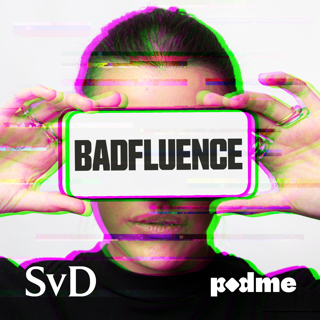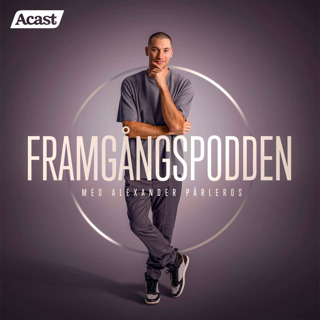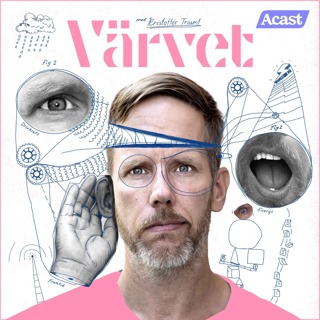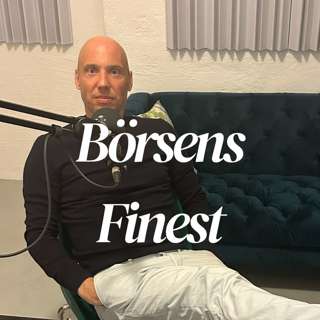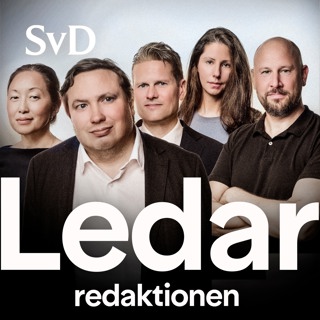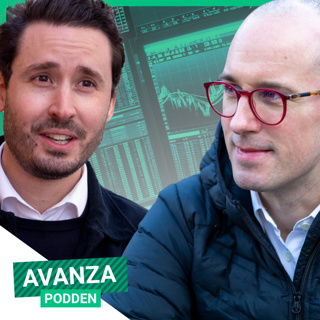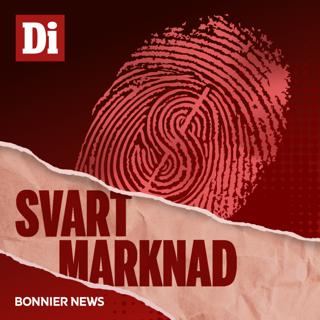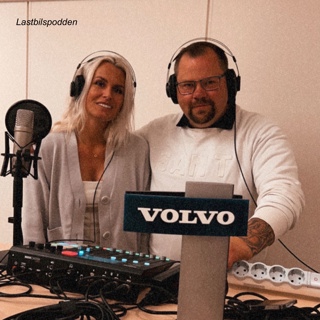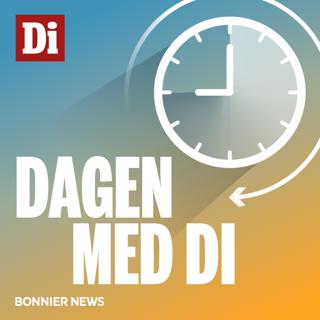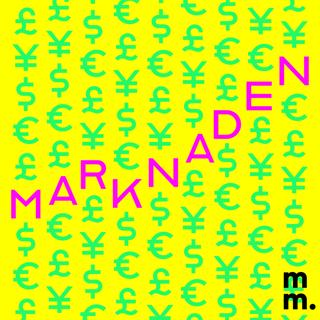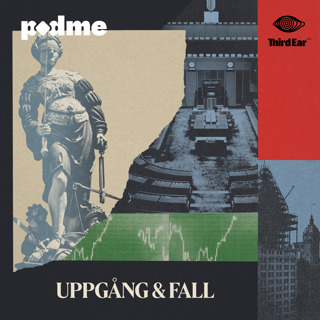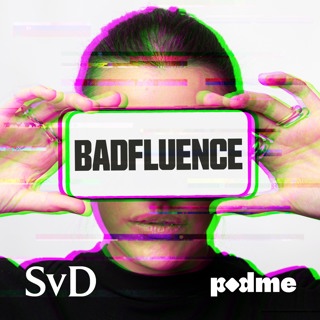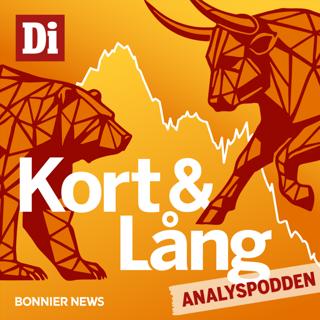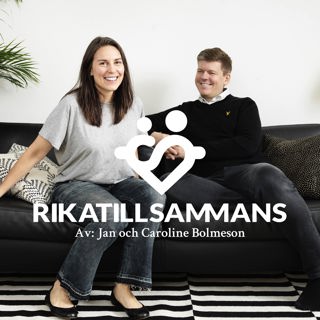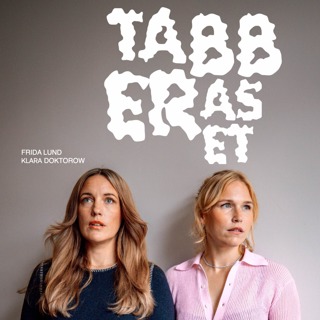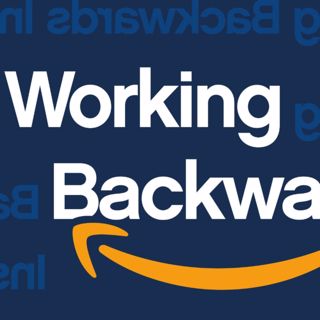
Amazon Narratives: Memos, Working Backwards from Release, More
When you hear stories about Amazon's "invention machine" -- which led to a company with not just one or two products but several successful diverse lines of business -- we often hear about things like: Memos, six pages exactly and no powerpoints at all!; or, the idea of just "work backwards from the press release"; and other such "best practices"... But what's often lost in hearing about these is the context and the details behind them -- the what, the how (as well as their origin stories) -- not to mention how they all fit together. Knowing this can give us insight into how all companies and leaders, not just Amazon and Bezos, can define their cultures and ways especially as they scale. After all, Amazon was once a small startup, too.So in this a16z Podcast with Sonal Chokshi -- the very first podcast for the new book Working Backwards: Insights, Stories, and Secrets from Inside Amazon (out February 9) -- authors Colin Bryar and Bill Carr share not only how Amazon did it, but how other companies can do it, too, drawing on their combined 27 years of firsthand observations and experiences from being in "the room" where it happens. Bill was vice president of digital media, founded and led Amazon Music, Amazon Video, Amazon Studios; and Colin started out in the software group, was a technical vice president, and then, notably, was one of Jeff Bezos' earliest shadows -- the shadow before him was in fact Andy Jassy, president and CEO of Amazon Web Services (soon to be CEO of Amazon).The two share not only the early inside stories behind (ultimately) big business moves like AWS, Kindle, Prime -- but more importantly, the leadership principles, decision making practices, AND operational processes that got them there. Because "working backwards" is much, much more than being obsessed with your customers, or having company values like "are right a lot”, "insist on the highest standards", "think big", "bias for action", and more. The discussion also touches on hot-topic debates like to lean-MVP-or-not-to-be; the internal API economy; do you even need a chief product officer; and if you need less, not more, coordination as you grow. Can startups really be like Amazon? Yes: and it comes down to how leaders, organizations, and people at all levels decide, build, invent... using the power of narratives and more.---The views expressed here are those of the AH Capital Management, L.L.C. (“a16z”) personnel quoted and are not the views of a16z or its affiliates. Certain information contained in here has been obtained from third-party sources, including from portfolio companies of funds managed by a16z. While taken from sources believed to be reliable, a16z has not independently verified such information and makes no representations about the enduring accuracy of the information or its appropriateness for a given situation. In addition, this content may include third-party advertisements; a16z has not reviewed such advertisements and does not endorse any advertising content contained therein.This content is provided for informational purposes only, and should not be relied upon as legal, business, investment, or tax advice. You should consult your own advisers as to those matters. References to any securities or digital assets are for illustrative purposes only, and do not constitute an investment recommendation or offer to provide investment advisory services. Furthermore, this content is not directed at nor intended for use by any investors or prospective investors, and may not under any circumstances be relied upon when making a decision to invest in any fund managed by a16z. (An offering to invest in an a16z fund will be made only by the private placement memorandum, subscription agreement, and other relevant documentation of any such fund and should be read in their entirety.) Any investments or portfolio companies mentioned, referred to, or described are not representative of all investments in vehicles managed by a16z, and there can be no assurance that the investments will be profitable or that other investments made in the future will have similar characteristics or results. A list of investments made by funds managed by Andreessen Horowitz (excluding investments for which the issuer has not provided permission for a16z to disclose publicly as well as unannounced investments in publicly traded digital assets) is available at https://a16z.com/investments/.Charts and graphs provided within are for informational purposes solely and should not be relied upon when making any investment decision. Past performance is not indicative of future results. The content speaks only as of the date indicated. Any projections, estimates, forecasts, targets, prospects, and/or opinions expressed in these materials are subject to change without notice and may differ or be contrary to opinions expressed by others. Please see https://a16z.com/disclosures for additional important information. Stay Updated:Find a16z on XFind a16z on LinkedInListen to the a16z Podcast on SpotifyListen to the a16z Podcast on Apple PodcastsFollow our host: https://twitter.com/eriktorenberg Please note that the content here is for informational purposes only; should NOT be taken as legal, business, tax, or investment advice or be used to evaluate any investment or security; and is not directed at any investors or potential investors in any a16z fund. a16z and its affiliates may maintain investments in the companies discussed. For more details please see a16z.com/disclosures. Hosted by Simplecast, an AdsWizz company. See pcm.adswizz.com for information about our collection and use of personal data for advertising.
8 Feb 20211h 3min

Anatomy of the SolarWinds Hack: Who What Where When How
In this special “3x”-long episode of our (otherwise shortform) news analysis show 16 Minutes -- past such 2-3X explainer episodes have covered section 230, Tiktok, GPT-3, the opioid crisis, more -- we cover the SolarWinds hack, one of the largest (if not the largest!) publicly known hacks of all time... and the ripple effects are only now starting to be revealed. Just this week, the U.S. Cybersecurity and Infrastructure Security Agency shared (as reported in the Wall Street Journal) that approximately 30% of both private-sector and government victims linked to the hack had no direct connection to SolarWinds. So who was compromised, do they even know, can they even know?!Because this hack is a supply-chain compromise involving various third-party software and services all connected together in a "chain of chains", the knock-on effects of it will be revealed (or not!) for years to come. So what do companies -- whether large enterprise, mid-sized startup, or small business -- do? What actually happened, and when does the timeline really begin? While first publicly revealed in December 2020 -- we first covered the news in episode #49 here when it first broke, and there have been countless headlines since (about early known government agency victims, company investigations, other tool investigations, debates over who and how and so on) -- the hack actually began not just a few months but years earlier, involving early tests, legit domains, and a very long game.We help cut through the headline fatigue of it all, tease apart what's hype/ what's real, and do an "anatomy of a hack" step-by-step teardown -- the who, what, where, when, how; from the chess moves to technical details -- in an in-depth yet accessible way with Sonal Chokshi in conversation with a16z expert and former CSO Joel de la Garza and outside expert Steven Adair, founder and president of Volexity. The information security firm (which specializes in incident response, digital forensics/ memory analysis, network monitoring, and more) not only posted guidance for responding to such attacks, but also an analysis based on working three separate incidents involving the SolarWinds hackers. But how did they know it was the same group? And why was it not quite the perfect crime?image: Heliophysics Systems Observatory spacecraft characterize, in the highest cadence, the constant stream of particles exploding from the sun affect Earth, the planets, and beyond via NASA Goddard Space Flight Center / Flickr Stay Updated:Find a16z on XFind a16z on LinkedInListen to the a16z Podcast on SpotifyListen to the a16z Podcast on Apple PodcastsFollow our host: https://twitter.com/eriktorenberg Please note that the content here is for informational purposes only; should NOT be taken as legal, business, tax, or investment advice or be used to evaluate any investment or security; and is not directed at any investors or potential investors in any a16z fund. a16z and its affiliates may maintain investments in the companies discussed. For more details please see a16z.com/disclosures. Hosted by Simplecast, an AdsWizz company. See pcm.adswizz.com for information about our collection and use of personal data for advertising.
1 Feb 202147min

Psychedelics: Striking a Balance Between Benefits and Side Effects
In recent years, there’s been a shift in how we think about psychedelics – from drugs of abuse and recreation, to powerful drugs for treating neuropsychiatric conditions such as depression, addiction, and PTSD. But there’s still a lot we don't know about how they work, and how we can maximize their therapeutic benefits while minimizing their adverse side effects. So this episode of Journal Club discusses a method for striking that balance, from a paper published in Nature last month, “A non-hallucinogenic psychedelic analogue with therapeutic potential“... which could represent a major step forward in psychedelic medicine. This episode first appeared on Bio Eats World:https://a16z.com/2021/01/21/journal-club-safer-psychedelic/ Stay Updated:Find a16z on XFind a16z on LinkedInListen to the a16z Podcast on SpotifyListen to the a16z Podcast on Apple PodcastsFollow our host: https://twitter.com/eriktorenberg Please note that the content here is for informational purposes only; should NOT be taken as legal, business, tax, or investment advice or be used to evaluate any investment or security; and is not directed at any investors or potential investors in any a16z fund. a16z and its affiliates may maintain investments in the companies discussed. For more details please see a16z.com/disclosures. Hosted by Simplecast, an AdsWizz company. See pcm.adswizz.com for information about our collection and use of personal data for advertising.
23 Jan 202126min
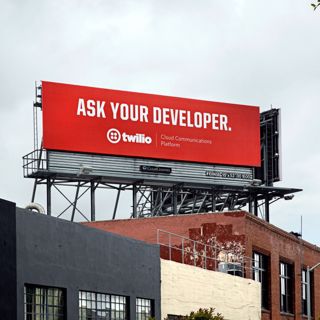
Developers as Creatives
The rise of developers -- as buyers, as influencers, as a creative class -- is a direct result of "software eating the world", and of key shifts in IT from on-prem to cloud & SaaS to the API economy, where application programming interfaces are essentially building blocks for innovation. Developers therefore not only play an outsized role in high-performing tech companies -- but managing and motivating them is actually critical in ALL companies, since every company is a tech company (whether they know it or not).As every industry turns digital, and a company's interface to their customers IS software, "asking" one's developer is the key to solving business problems and to thriving not just surviving, argues Jeff Lawson, CEO and co-founder of cloud communications platform-as-a-service company Twilio, in his new book, Ask Your Developer: How to Harness the Power of Software Developers and Win in the 21st Century. So in this episode of the a16z Podcast in conversation with Sonal Chokshi and David Ulevitch (who previously argued "the developer's way" is the future of work), Lawson shares hard-earned lessons learned, mindsets, strategies, and tactics -- from "build vs. buy" to "build vs. die", to the art and science of small teams ("mitosis") -- for leaders and companies of all sizes.But what does it mean to truly treat developers as creatives within an organization? What does it mean to be "developer first"? And how does this affect customers, product, go-to-market? All this and more in this episode. Stay Updated:Find a16z on XFind a16z on LinkedInListen to the a16z Podcast on SpotifyListen to the a16z Podcast on Apple PodcastsFollow our host: https://twitter.com/eriktorenberg Please note that the content here is for informational purposes only; should NOT be taken as legal, business, tax, or investment advice or be used to evaluate any investment or security; and is not directed at any investors or potential investors in any a16z fund. a16z and its affiliates may maintain investments in the companies discussed. For more details please see a16z.com/disclosures. Hosted by Simplecast, an AdsWizz company. See pcm.adswizz.com for information about our collection and use of personal data for advertising.
13 Jan 202133min

Section 230: Everything You Need to Know -- Tweets, Free Speech, Beyond
All about section 230 of the Communications Decency Act -- in what Wired senior writer (and host of the Get Wired podcast) described as "one of the clearest-but-still-nuanced explainers I've heard - worth listening to". So what does and doesn't it say? How does this law play out against broader questions and debates around platforms, content moderation, and free speech? This conversation between Mike Masnick (founder and editor in chief of Techdirt) and a16z editor in chief Sonal Chokshi was originally published on our show 16 Minutes, in the context of previous protests and presidential tweets (and an executive order then to prevent “online censorship”)-- but is exactly as relevant today... perhaps now more than ever.https://a16z.com/2020/05/31/16mins-section-230-communications-decency-act-content-moderation-free-speech-internet-past-present-future/image: presidential tweet activity/ Wikimedia Commons Stay Updated:Find a16z on XFind a16z on LinkedInListen to the a16z Podcast on SpotifyListen to the a16z Podcast on Apple PodcastsFollow our host: https://twitter.com/eriktorenberg Please note that the content here is for informational purposes only; should NOT be taken as legal, business, tax, or investment advice or be used to evaluate any investment or security; and is not directed at any investors or potential investors in any a16z fund. a16z and its affiliates may maintain investments in the companies discussed. For more details please see a16z.com/disclosures. Hosted by Simplecast, an AdsWizz company. See pcm.adswizz.com for information about our collection and use of personal data for advertising.
9 Jan 202139min

Baumol's Cost Disease, in Healthcare... and Where We Go Next
If software’s eating the world -- and more specifically, bringing costs down and increasing productivity through entire industries -- why have some industries, like healthcare, been so resistant? And what could the future look like once technology really gets in? With a16z co-founder -- and author of the now nearly decade-old thesis of “software eating the world” -- Marc Andreessen, in conversation with a16z bio general partner Vijay Pande. This episode originally ran on our show Bio Eats World, but we’re sharing it here in the new year as it’s very relevant for ANYone interested in, well, the future of software eating the world;) https://a16z.com/2020/12/14/cost-disease-healthcare-baumol/ Stay Updated:Find a16z on XFind a16z on LinkedInListen to the a16z Podcast on SpotifyListen to the a16z Podcast on Apple PodcastsFollow our host: https://twitter.com/eriktorenberg Please note that the content here is for informational purposes only; should NOT be taken as legal, business, tax, or investment advice or be used to evaluate any investment or security; and is not directed at any investors or potential investors in any a16z fund. a16z and its affiliates may maintain investments in the companies discussed. For more details please see a16z.com/disclosures. Hosted by Simplecast, an AdsWizz company. See pcm.adswizz.com for information about our collection and use of personal data for advertising.
6 Jan 202130min

Words of 2020! (and Metaphors, and Interfaces of the Year)
"In a year that left us speechless, 2020 has been filled with new words unlike any other”... so it's unprecedented that for the first time, the Oxford English Dictionary did NOT name a word of the year. But do we really need the dictionaries to tell us what our words of the year are? Especially if the approaches "Big Word" takes may be based on more lagging vs. leading indicators; after all, language is created and constructed as we go.And yet. People want the dictionary to give them permission of "tell me what the words are", observes internet linguist (and author of the NYT bestselling book Because Internet: Understanding the New Rules of Language) Gretchen McCulloch. No! We, the people, decide what the words are!! So in this special holiday, end-of-year episode, a16z Podcast showrunner Sonal Chokshi chats with McCulloch about the words of the year in and beyond Oxford's "Words of an Unprecedented Year" report -- and importantly, the tech shifts and cultural shifts behind them.From remote work portmanteaus to scientific discourse in a pandemic (for better and for worse) to social movements and more -- we take a whirlwind tour through the words of the year, exploring misplaced analogies, shifting metaphors, and even the evolution of interfaces. We dip into the settling of the "Zoomer" generation and "moonshots"; dive into the need for "third places" and parties; debate Dunbar numbers for conversations, and the trend of "proximity chat" -- and discuss the meta story of language, and of writing itself. The English language may have resulted from network effects involving the "loners" who introduce words, and the “leaders” who spread them; but writing is a technology that spreads with the tools, going well beyond medium/message, connecting us across time and place and online spaces. image: Andy Simmons / Flickr Stay Updated:Find a16z on XFind a16z on LinkedInListen to the a16z Podcast on SpotifyListen to the a16z Podcast on Apple PodcastsFollow our host: https://twitter.com/eriktorenberg Please note that the content here is for informational purposes only; should NOT be taken as legal, business, tax, or investment advice or be used to evaluate any investment or security; and is not directed at any investors or potential investors in any a16z fund. a16z and its affiliates may maintain investments in the companies discussed. For more details please see a16z.com/disclosures. Hosted by Simplecast, an AdsWizz company. See pcm.adswizz.com for information about our collection and use of personal data for advertising.
24 Dec 202051min

The Machine That Made the Vaccine: Company, Platform, Innovation
In this special episode of Bio Eats World -- which aired right after the FDA authorized Moderna's mRNA vaccine for emergency use -- Moderna CEO Stephane Bancel tells the story of not just the vaccine’s development, but the machine that made the vaccine: the platform, the technology, and the moves behind the vaccine’s development.How does this new technology that uses mRNA work; why is this such a fundamental shift in the world of drug development; and where will this technology go next? https://a16z.com/2020/12/18/moderna-covid-vaccine-mrna-technology/ Stay Updated:Find a16z on XFind a16z on LinkedInListen to the a16z Podcast on SpotifyListen to the a16z Podcast on Apple PodcastsFollow our host: https://twitter.com/eriktorenberg Please note that the content here is for informational purposes only; should NOT be taken as legal, business, tax, or investment advice or be used to evaluate any investment or security; and is not directed at any investors or potential investors in any a16z fund. a16z and its affiliates may maintain investments in the companies discussed. For more details please see a16z.com/disclosures. Hosted by Simplecast, an AdsWizz company. See pcm.adswizz.com for information about our collection and use of personal data for advertising.
21 Dec 202040min


